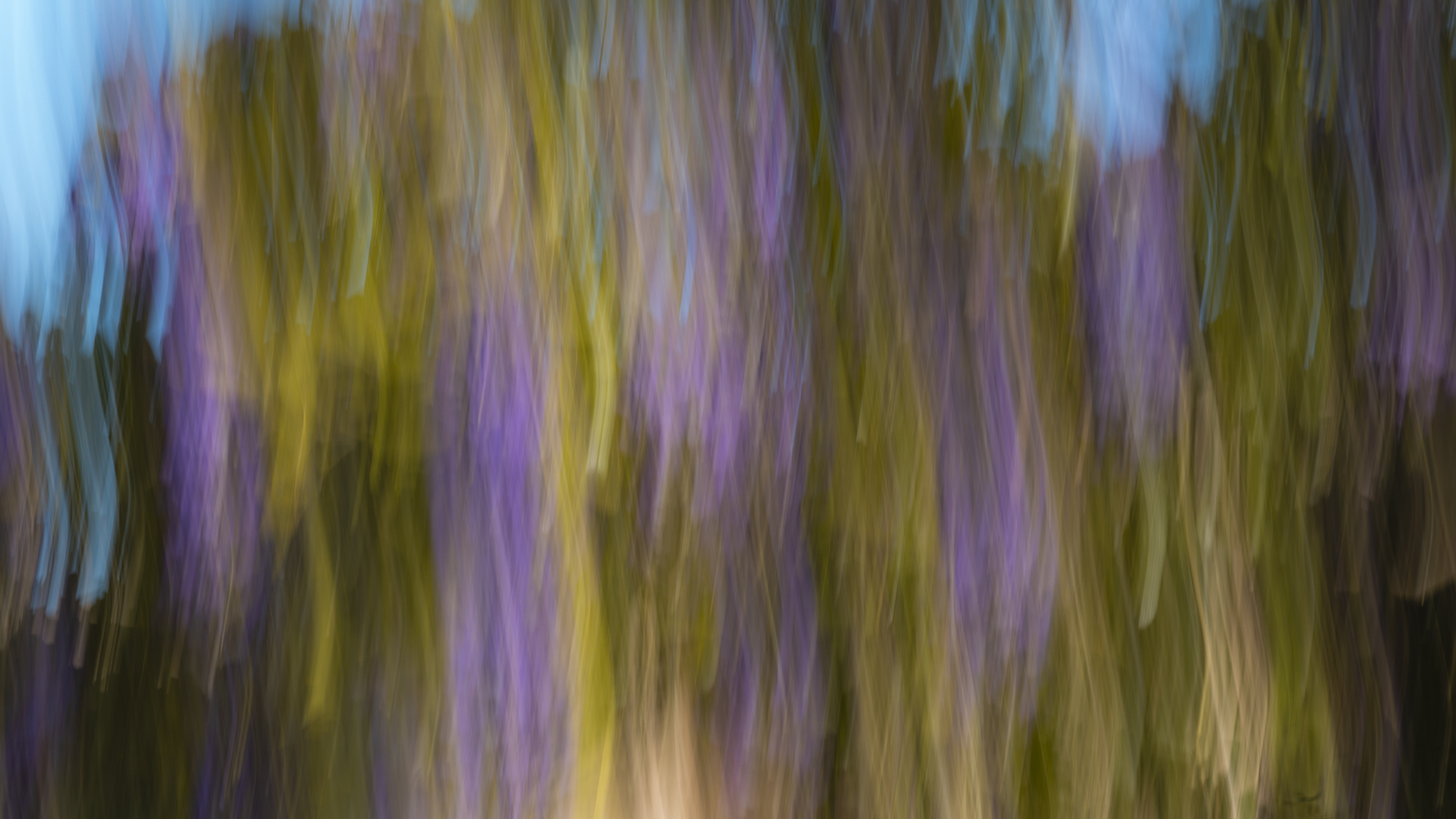Intentional Camera Movement
I belong to a camera club in Canmore, our hometown. We meet monthly and the agenda includes an item termed “Club Challenge”. Each member submits 3-4 images, in accordance with a predetermined theme. The challenge is to apply one’s skills and knowledge (or learn new ones) to produce images that match the theme.
This month’s theme is ICM, Intentional Camera Movement. As the name suggests, it requires the photographer to move the camera coincident with opening the shutter. The most obvious result is to blur the image being photographed. There are different ways to move the camera, producing a variety of possible outcomes. In addition to applying the usual photographic skills and knowledge, it is necessary to develop the dexterity to move the camera, as to achieve a desired result. It requires practice and patience.
Exposure time is longer than for most types of photography, allowing time to complete the movement before the shutter closes. Typically, exposure times are in the range of .25-4.0 seconds, depending on light conditions. Aperture openings are normally small (f/16-f/22) and camera sensitivity is low (ISO 50) to enable longer exposures. If lighting conditions are bright, neutral density filters may be necessary to slow the capture of the light.
My first picture features a Texas Laurel Tree. I used a panning motion, pulling the camera downward as I triggered the shutter. The outcome is vertical streaking of the green leaves and purple flowers. The early morning light required me to use a faster shutter speed (.125 seconds) to avoid overexposure.
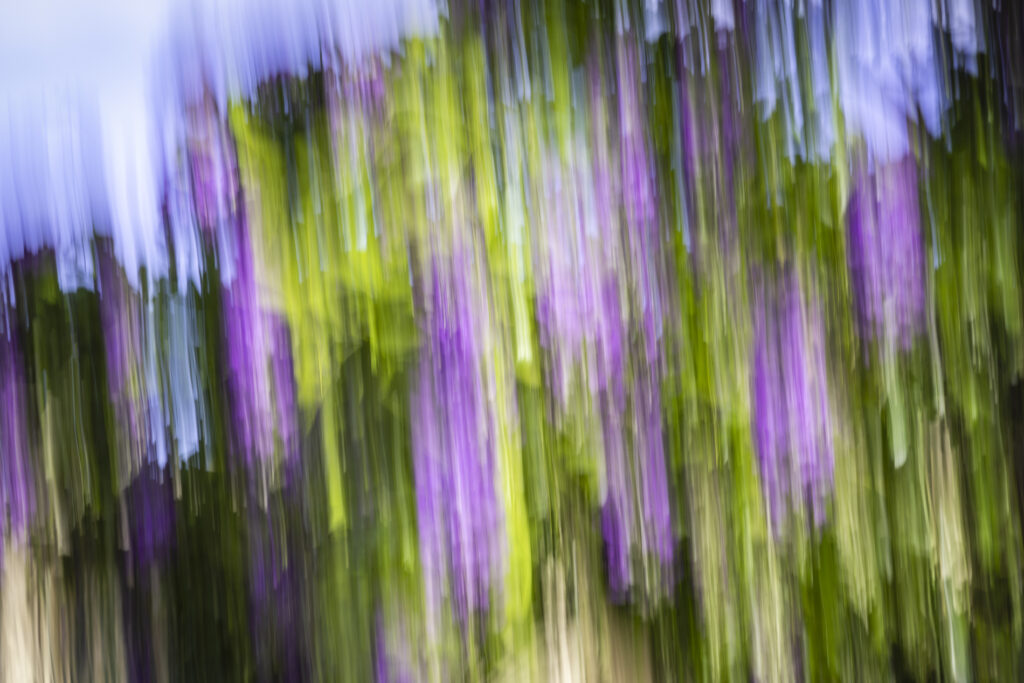
I took this next picture indoors, with softer, more uniform light. This is a floral arrangement, photographed with a twisting motion of the lens’ focus ring coincident with triggering the shutter. This has the effect of continuously reducing the lens’ focal length, expanding the image frame while the shutter remains open. As the frame expands, so does the subject, streaking the leaves and flowers, which are captured as lines radiating outward. This technique works best using a tripod to support the camera while manipulating the focus ring and shutter in concert.
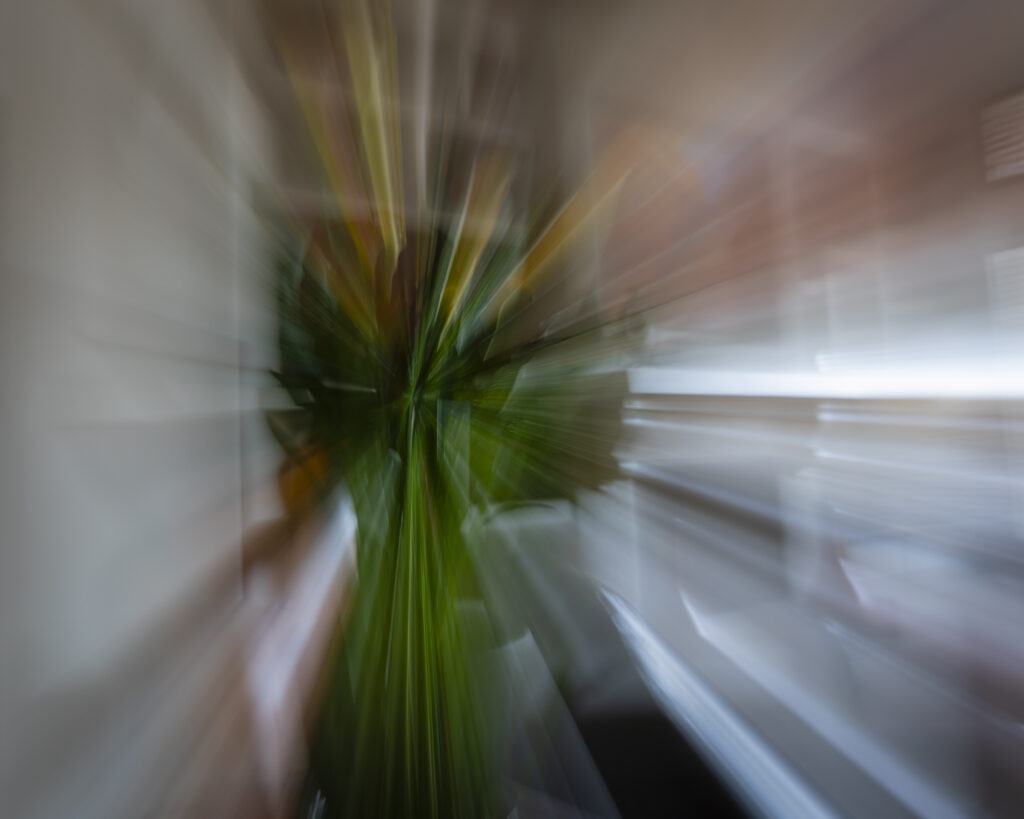
The subject here is a brick walkway in our backyard. The technique used here is panning, movement of the camera diagonally, rather than vertically as seen in the first picture.
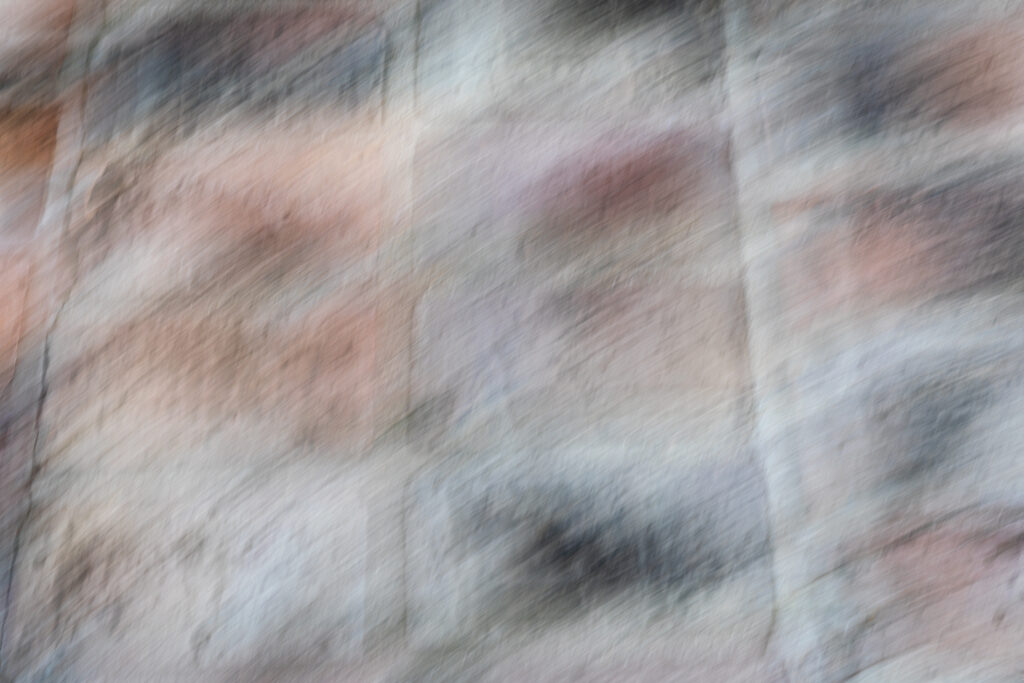
Back indoors, I took this picture in the dining room, shooting down the length of the dining table. This is another example of the zoom technique; that is, twisting the focus ring on the camera and zooming out while the shutter remains open. This technique has really exaggerated the light coming in through the shutters. A great effect.

These are the window blinds in my office, where I’m presently seated typing away. I took this picture, once again using the zoom technique. This is my favourite of the pictures included here today. I confess, I did not anticipate this particular result, a pleasant surprise. I’ll need to study it some more before I fully grasp what happened here.
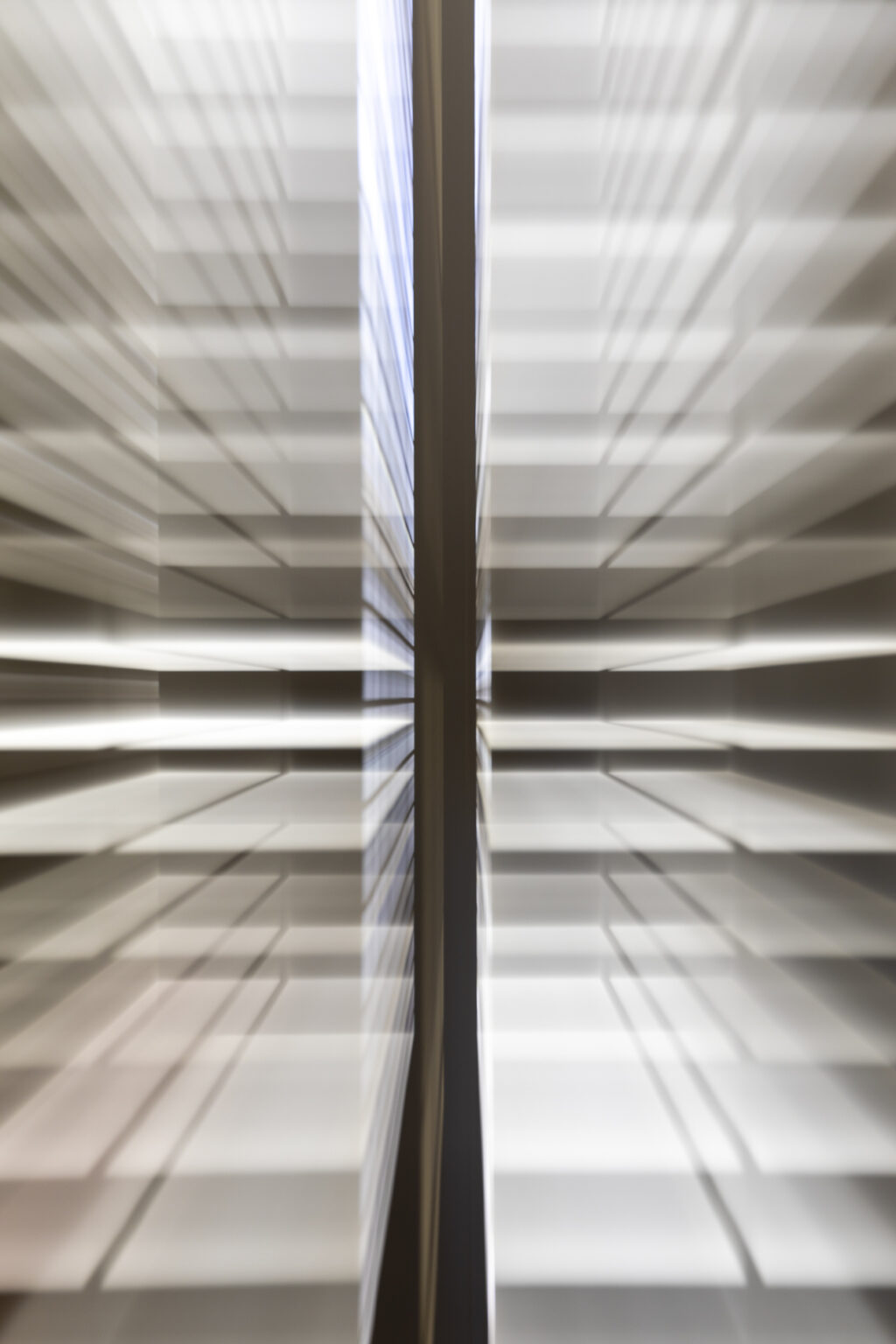
This image was made with the Teddy Bear Cholla cactus as the subject. The outward explosion of lines indicates once again the use of the zoom out technique.
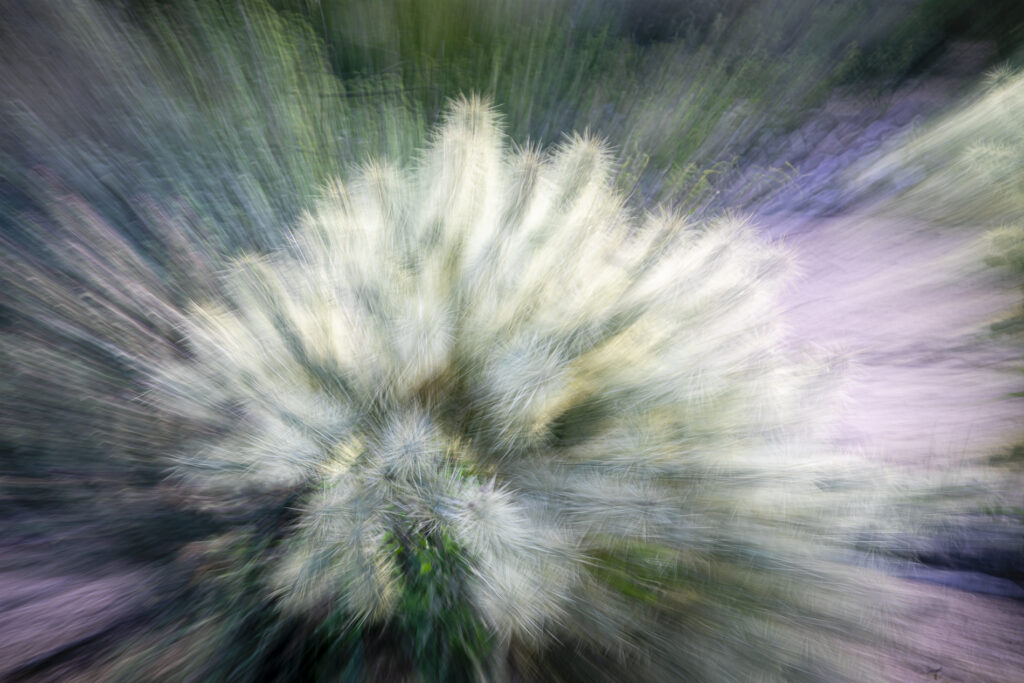
This is a grouping of several Barrel Cacti, a decorative species, in common use for landscaping. The photograph was not taken by shooting them in a washing machine. To achieve this result, I rotated the entire camera for the duration of the shutter opening of 0.8 seconds. To do this I used a tripod to support and enable me to rotate the camera. I used a telephoto lens, supported by a ring around its barrel, that will loosen to permit its rotation. The lens is mounted on the tripod, not the camera. The camera is appended to the lens and can be turned while I trigger the shutter.
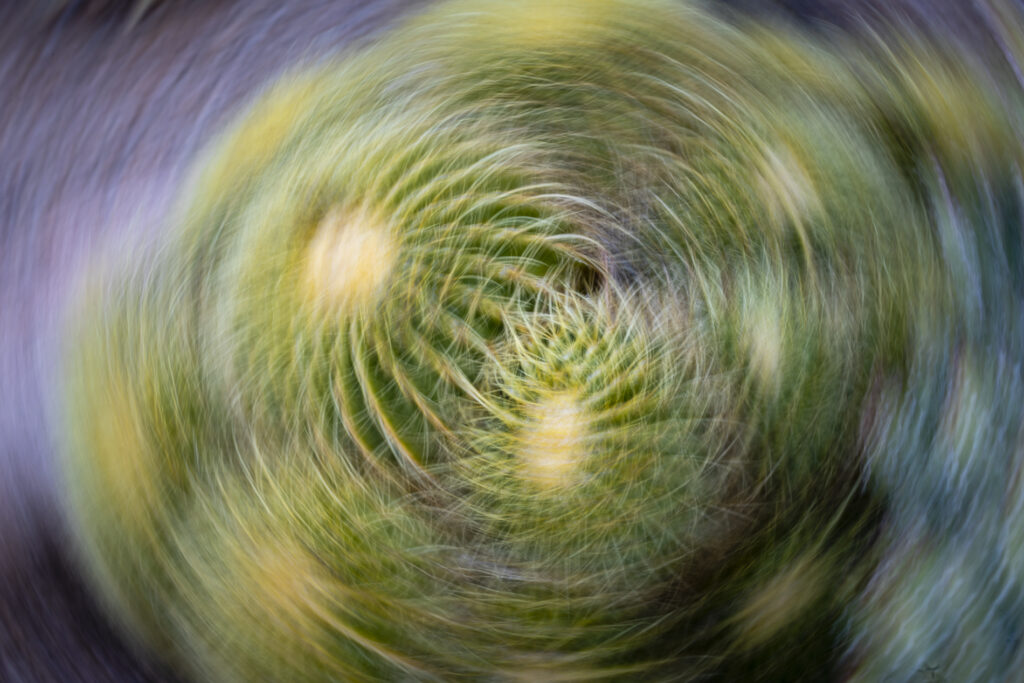
I first learned about ICM several years ago, but haven’t used it very often since. I found it an interesting challenge to come up with 4 photographs for our monthly meeting. I look forward to some feedback from other club members and of course, I welcome any thoughts you are willing to share.

